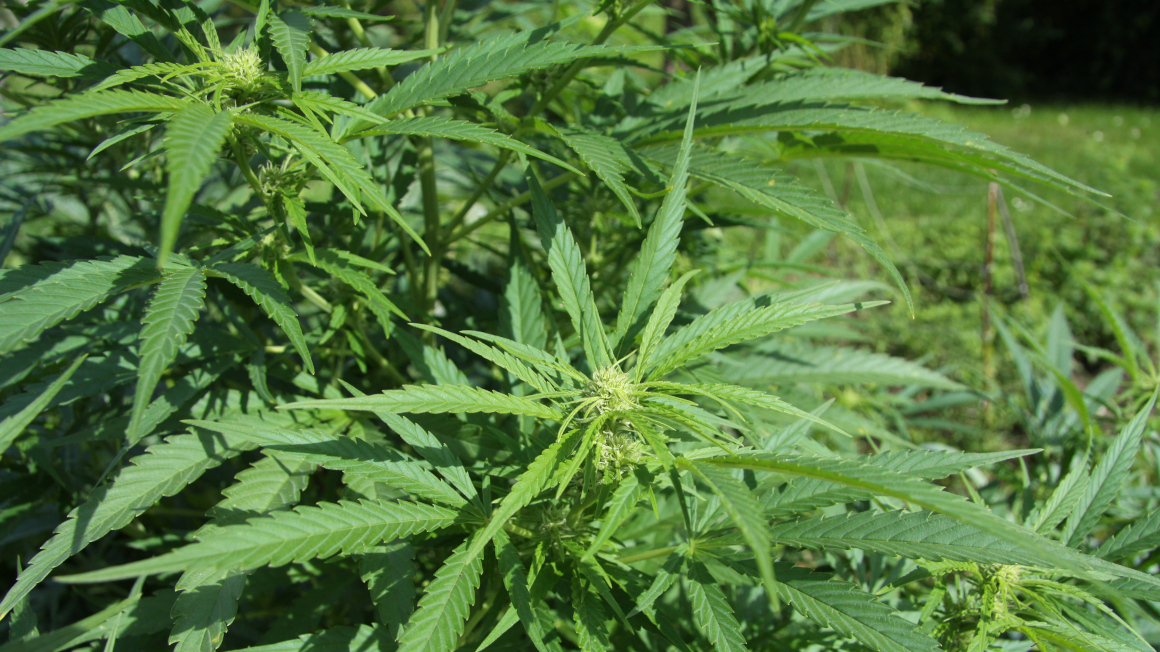Industrial hemp for climate-friendly agriculture
Researchers are investigating whether the cultivation of hemp as an intercrop can lead to a reduction in nitrate concentrations in the soil and whether hemp leaves can replace the soy content in the feed of dairy cows.

Large quantities of climate-damaging greenhouse gases are released in agriculture every year as a result of livestock farming and fertilization practices. Criticism focuses on the introduction of excessive nitrate levels into the soil through nitrogen fertilizers and the import of feedstuffs such as soy from abroad. According to the German Federal Environment Agency, agriculture was responsible for about 8% of greenhouse gas emissions in this country in 2021, according to initial estimates. The cultivation of industrial hemp could reduce this problem. Under the leadership of the Research Institute for Farm Animal Biology Dummerstorf (FBN), researchers together with partners from practice want to investigate how the cultivation of industrial hemp as an intercrop can reduce nitrate concentrations in the soil, and whether hemp leaves as feed can replace soy in dairy cows. Alongside the FBN, the Neubrandenburg University of Applied Sciences, the service company FPS Anklam GmbH and a farmer from the Hemp Farm Co. KG in Melz are involved in the "ZwiHanf" project. The project is being funded with around 300,000 euros from the European Agricultural Fund for Rural Development.
Save fertilizer, water and pesticides
Industrial hemp (Cannabis sativa) was cultivated in Germany for many centuries until rapeseed, cheap cotton and soy from abroad displaced the protein-rich plant from domestic fields. Now it is regaining importance - especially for fiber and oil production. Newer varieties contain only small traces of the narcotic THC, and require hardly any fertilizer, less water and no pesticides.
Analysis of the nitrogen uptake of the hemp plant
"The plants can root up to three meters deep," explained farmer Rafael Dulon from the hemp farm in Melz. Due to their rapid growth, they absorb a lot of nitrogen from the soil. In the project, the team now wants to find out how great the nitrate uptake actually is in the respective soil layers. "To find out, the nitrogen uptake of the hemp plants will be recorded over the next two years using hyperspectral measurements and biomass surveys, and soil samples will be taken at different depths on both conventionally and organically farmed areas," explains Eike Stefan Dobers from Neubrandenburg University of Applied Sciences.
Suitability of hemp leaves as soy substitute
Due to its nutrients, industrial hemp is also interesting as animal feed. The Research Institute for Farm Animal Biology is testing the extent to which THC-free hemp leaves are suitable as a soy substitute for feeding dairy cows. "Although soybean extraction meal is very high in protein at over 50%, hemp leaves have more protein at up to 23% than, for example, native legume crops such as clover or alfalfa. In addition, the fat content of hemp leaves can be up to 20%," emphasized project leader PD Dr. Björn Kuhla of the FBN. Whether the protein and fat of the hemp leaves are also digestible or whether other ingredients can negatively influence the digestion or even the methane production of the animals, that is what the researchers want to find out in the project.
However, strict rules apply to the use of industrial hemp as animal feed. The THC content of 0.2% must not be exceeded. The project partner FPS Anklam GmbH is responsible for analyzing the plant and soil samples. The company has developed a method for detecting THC from hemp for this purpose.
Practical cultivation methods for agriculture
The project team plans to present initial results as early as next year. The aim is to provide farms with practical methods for cultivating commercial hemp so that nitrate emissions from arable soils in so-called red areas, CO2 emissions from soy imports and, if necessary, methane emissions from dairy cow farming can be further reduced.
bb


